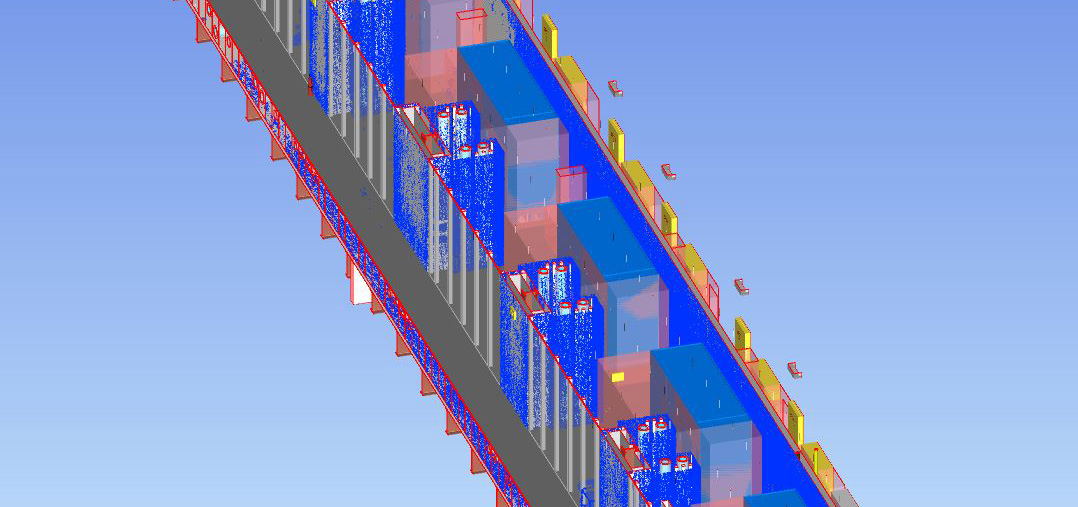By Mike Themanson, Vice President, Safety
Entering my 23rd year as a safety professional, I look back and can’t help but notice the tremendous changes that have taken place in the field that are the result of advancements in technology. When I started in the industry, I was handed a pager, a computer with Windows ‘95 and shown how to use a fax machine. Now, I can execute all those functions, plus an almost limitless list of anything else – just from my iPhone.
At the beginning of my career, I used an excel spreadsheet to track incidents. Today I use a customizable software platform that can perform tracking and trending on all leading and lagging indicators. This platform can predict that this Thursday, at 9:00 a.m., there may be a slip/fall incident on one of our jobsites. That’s great data for us in construction safety, but are we sure the information is accurate? If it is, how do we use it to mitigate incidents?
The Importance of Technology and Data
At Clune Construction, we have implemented several new technology platforms over the past year. The question now is: “are we using this technology to its fullest potential?” The two most important factors to help answer this question are the accuracy of the data input and the use of the information output.
First, we must train superintendents to use their on-site technology to capture data and make sure it is entered correctly. When we get correct and timely information from our jobsites around the country, we are able to break that information down by region, project, superintendent, subcontractor, etc. to find issues that we can fix or prevent before they occur again in another location.
How do we use the information this technology can provide?
The data we receive from our software, through a daily dashboard or monthly report, is quickly communicated to the field. This helps keep our field staff up-to-date on leading and lagging indicators companywide. For example, if there is a trend towards improper scissor lift use, that information is sent to our subcontractors with a toolbox talk on proper lift use.
In addition, this information is critical to determining how we buy jobs. By tracking our subcontractor’s incidents and non-compliant issues, we can better determine which subcontractors are best to work on a project. If the data is showing any safety issues with a particular subcontractor, Clune may not work with them until they correct their work processes.
In a more general sense, to revisit the 9:00 a.m. slip/fall incident prediction example above, if our data shows us that there is a particular time of day when a lot of incidents occur nationwide, we make it our mission to figure out why. Clunes’ Safety Department determined that 9:00 a.m. is one of the most dangerous times on a jobsite – but why? After further investigation, we discovered that many tradesmen are more distracted at this time because a break is coming up. As a result, they are more likely to slip or fall, or improperly perform a task that could injure others. This is when we need to reinforce our fundamental safety practices.
Back to the Basics
By using the information from the data we collect to determine when and why incidents are more likely to happen, we can educate our field staff and subcontractors on ways to prevent them. We can reinforce the basic training tradesmen receive though toolbox talks, webinars and our library of two- to five-minute videos on key safety concepts. With old practices and new technology merging, these are often the most overlooked components of a safety program.
The keys to a successful safety program are communication on new initiatives, follow-up training and periodic reinforcement of key concepts to make us better and safer builders.
Construction companies are investing a lot of time and money in technology. Why not make sure we’re using it to its fullest potential by going back to the basics and use this technology to make fundamental safety practices more effective.
About the Author:
In his role as Clune Construction’s Vice President, Safety, Mike Themanson ensures the promotion, development, and maintenance of ES&H regulatory compliance through federal, state and local authorities. He applies fundamental concepts, practices and procedures of environmental, safety and health training and education for all Clune projects.
Mike has more than 20 years of construction experience and is a graduate of Illinois State University with a degree in occupational safety and health. Mike is a registered Construction Health and Safety Technician, a Certified Risk Insurance Specialist and an OSHA Authorized Construction Trainer. He has been with Clune since 2015, and during that time Clune’s EMR Score has been under 0.70, and is currently 0.59.




